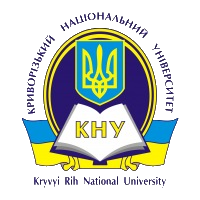
11Vitaliy Matusevych St., Kryvyi Rih.
On October 4, 1922, Kryvyi Rih Evening Workers’ Technical School got started in the building of the 7-year school at Vechirnii Kut Station. It was aimed at training engineering staff for Kryvyi Rih’s iron ore mining enterprises. 67 students began their training at the three departments of the technical school – mining, mechanical and electrotechnical. They were taught by 20 teachers, 9 of them had a higher education. In 1926, the first 12 graduates got their technician diplomas. In 1929 the Technical School was transformed into the Evening Workers’ Institute which became Kryvyi Rih Mining Institute (KMI) in 1931. During the World War II, KMI was evacuated to Nizhni Tagil and had been working in the building of the local metallurgical technical school since September 20, 1941. In September of 1944, KMI resumed classes for students in its native town. Since then, the number of students had increased along with the growing role of science in formation of the academic teaching staff. Five lecturers of the Institute became Lenin and State Prize winners. In 1969, 39 research works performed by the Institute scientists were exhibited at the All-Union Exhibition of Achievements of National Economy. The Institute was awarded with the Great Gold Medal and the 1st degree Diploma. 29 lecturers and 23 students were given the exhibition medals and premiums. In 1972, the Mining Institute was awarded the Order of the Red Banner of Labour for merits in training engineers and developing scientific studies. Many Institute lecturers and scientific workers received state rewards. In 1982, KMI was awarded the Recognition Certificate of the Presidium of the Supreme Soviet of the USSR. In 1994, the Institute got the status of a technical university. On March 21, 2011, the Cabinet of Ministers of Ukraine established Kryvyi Rih State University. On May, 14, 2011, Kryvyi Rih State University got a national status by President’s decree. The University comprises eight faculties: mining-metallurgical, civil engineering, geological-ecological, electric-engineering, machine-building, information technologies, transport, economics and business management. It includes six colleges (Automobile Transport, Mining, Mining and Electromechanic, Inhulets, Industrial, Polytechnic) and two research institutes (Scientific Research Mining Institute and Scientific Research Institute of Labour Safety and Ecology in Ore Mining and Metallurgical Industry).
School Director: Prof. Mykola Stupnik
Population:
Population of Teaching Staff: